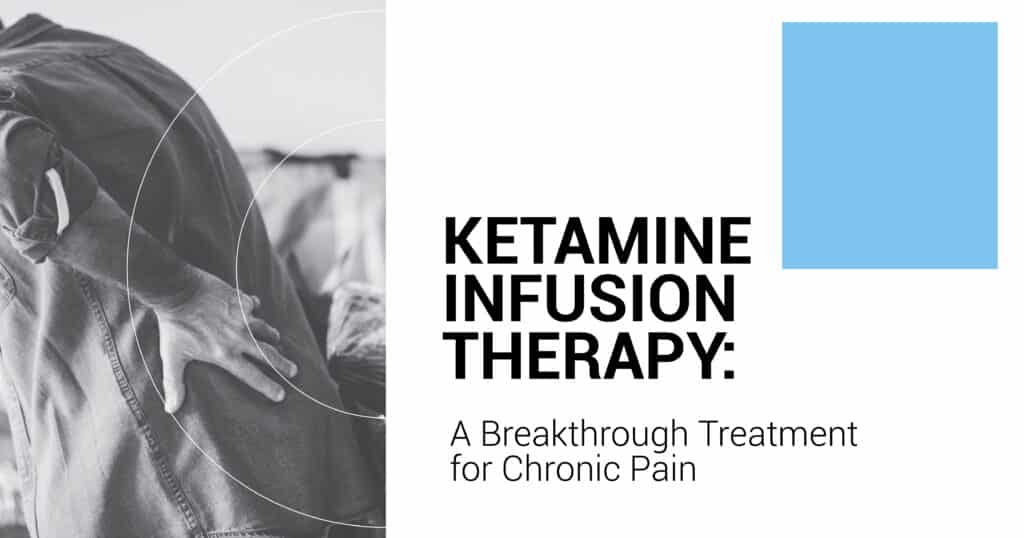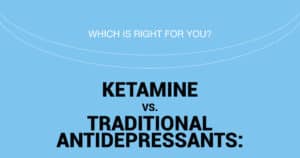Chronic pain can be a debilitating and life-altering condition, leaving many individuals searching for effective relief. In recent years, Ketamine Infusion Therapy has emerged as a promising and innovative treatment for chronic pain. In this comprehensive guide, we will explore what Ketamine Infusion Therapy is, how it works, and why it’s considered a breakthrough treatment for chronic pain. Let’s delve into the science behind Ketamine Infusion Therapy and discover its potential to transform chronic pain management.
What is Ketamine Infusion Therapy?
Ketamine Infusion Therapy is a medical treatment that involves administering low doses of ketamine through an intravenous (IV) drip to manage chronic pain and other conditions. Originally developed as an anesthetic, ketamine has gained attention for its efficacy in treating pain and mood disorders, including treatment-resistant depression and post-traumatic stress disorder.
Key Aspects of Ketamine Infusion Therapy
- Medical Use: Initially used as an anesthetic in surgeries and medical procedures.
- Current Applications: Now used to treat chronic pain, depression, PTSD, and more.
- Administration: Administered in a controlled clinical setting through an IV drip over several sessions.
How Does Ketamine Infusion Therapy Work?
Understanding the mechanisms of Ketamine Infusion Therapy requires a look at how ketamine interacts with the brain and nervous system.
The Science of Ketamine
Ketamine is a dissociative anesthetic that affects the brain’s neurotransmitter systems. Here’s a breakdown of how ketamine works:
- NMDA Receptor Antagonism: Ketamine primarily works as a noncompetitive N-methyl-D-aspartate (NMDA) receptor antagonist, blocking the NMDA receptor involved in pain processing and mood regulation.
- Glutamate Modulation: By inhibiting NMDA receptors, ketamine helps balance the levels of glutamate, a neurotransmitter associated with pain and depression.
Mechanism of Action
- Pain Relief: Ketamine’s NMDA receptor antagonism reduces pain signaling pathways.
- Neuroplasticity: Ketamine promotes synaptogenesis (formation of new synapses) and neuroplasticity, which helps rewire pain-related neural circuits.
Effects on Chronic Pain
Chronic Pain Conditions Treated by Ketamine Therapy
- Neuropathic Pain: Pain caused by nerve damage or dysfunction.
- Complex Regional Pain Syndrome (CRPS): A condition characterized by severe pain, usually in the arms or legs.
- Fibromyalgia: A condition marked by widespread pain and fatigue.
- Chronic Migraine: Severe headaches occurring frequently over an extended period.
How Ketamine Alleviates Chronic Pain
- Reducing Pain Sensitivity: By interfering with pain pathways, ketamine reduces pain sensitivity.
- Improving Pain Management: Enhances the effectiveness of other pain management strategies and medications.
Treatment Protocol for Ketamine Infusion Therapy
Typical Treatment Regimen
- Initial Phase: Usually involves a series of infusion sessions over a few weeks.
- Maintenance Phase: Follow-up sessions may be scheduled depending on the patient’s response.
Session Details
- Duration: Each infusion session lasts about 40 minutes to 1 hour.
- Frequency: Patients may initially receive infusions two to three times per week.
The Benefits of Ketamine Infusion Therapy for Chronic Pain
Ketamine Infusion Therapy offers several advantages over traditional pain management methods. Here are some of the key benefits:
Rapid Onset of Relief
- Quick Results: Patients often experience significant pain relief after just a few sessions.
- Immediate Effects: Pain relief can begin during the first infusion session.
Effective for Treatment-Resistant Pain
- Alternative to Opioids: Ketamine therapy offers a non-opioid option for patients who have not responded to traditional pain medications.
- Innovative Solution: It provides a new treatment avenue for chronic pain conditions resistant to conventional therapies.
Minimal Side Effects
- Low Incidence: Common side effects are usually mild and may include dizziness, nausea, or disorientation.
- Short-Term Effects: Most side effects are temporary and resolve quickly after the infusion.
Improved Quality of Life
- Enhanced Functionality: Many patients report improvements in their ability to perform daily activities.
- Long-Term Benefits: Potential for sustained pain relief and improved quality of life.
Comparison with Traditional Pain Treatments
Traditional Pain Management Methods vs. Ketamine Infusion Therapy:
| Treatment Type | Description | Pros | Cons |
| Opioids | Pain relief through medication | Effective for severe pain | Risk of addiction and tolerance |
| Physical Therapy | Exercises to manage pain | Non-invasive, improves physical function | May require long-term commitment |
| Antidepressants | Medication for chronic pain | Can address pain and depression | Delayed onset of effects |
| Ketamine Infusion Therapy | Intravenous treatment for pain | Rapid relief, effective for resistant pain | Requires regular sessions |
Is Ketamine Infusion Therapy Right for You?
Determining if Ketamine Infusion Therapy is the right option involves evaluating your chronic pain condition and discussing it with a healthcare provider. Here are some factors to consider:
Assessment of Pain Condition
- Severity of Pain: Evaluate whether your chronic pain is severe and resistant to other treatments.
- Previous Treatments: Consider if you have tried other therapies without significant improvement.
Consultation with a Specialist
- Medical Evaluation: A healthcare provider will assess your condition to determine if ketamine therapy is a suitable option.
- Treatment Plan: Your specialist will develop a personalized treatment plan based on your needs.
Additional Considerations
Ketamine Infusion Therapy is also being researched for its antidepressant effects. Patients with treatment-resistant depression and severe depression may find ketamine therapy beneficial. In cases where traditional antidepressants and standard treatment options have failed, ketamine’s rapid improvement in depressive symptoms offers new hope.
Potential Side Effects and Risks
While ketamine is generally well-tolerated, potential side effects include increases in blood pressure, intracranial pressure, and dissociative effects. It’s essential to have a responsible care team and healthcare professionals to monitor your response to the treatment.
Clinical Studies and Evidence
Numerous clinical studies and clinical trials have demonstrated the efficacy of ketamine treatment for both pain and mood disorders. The antidepressive properties and rapid action of ketamine make it a valuable addition to mental health and pain management protocols.
Conclusion
Ketamine Infusion Therapy represents a significant advancement in the treatment of chronic pain. With its rapid onset of relief, effectiveness for treatment-resistant conditions, and minimal side effects, ketamine therapy offers a promising alternative for managing severe and persistent pain. Supported by clinical evidence and positive patient outcomes, this therapy provides hope for those struggling with chronic pain conditions.
If you are exploring treatment options for chronic pain, Ketamine Infusion Therapy might be a breakthrough solution worth considering. Consult a qualified healthcare provider to determine if this innovative treatment aligns with your pain management goals.
FAQs
- What is the primary purpose of Ketamine Infusion Therapy? The primary purpose is to provide relief for chronic pain conditions that have not responded well to other treatments.
- How does Ketamine Infusion Therapy differ from traditional pain medications? Unlike traditional pain medications, ketamine targets pain pathways in the brain and can provide rapid, long-term relief without the risk of addiction.
- What are the common side effects of Ketamine Infusion Therapy? Common side effects include mild dizziness, nausea, and temporary disorientation.
- How many sessions of Ketamine Infusion Therapy are typically required? Most patients start with a series of 6-12 sessions, the frequency and number of which depend on individual needs and responses.
- Is Ketamine Infusion Therapy covered by insurance? Coverage varies by insurance plan. It’s essential to check with your insurance provider for details on coverage and costs.









